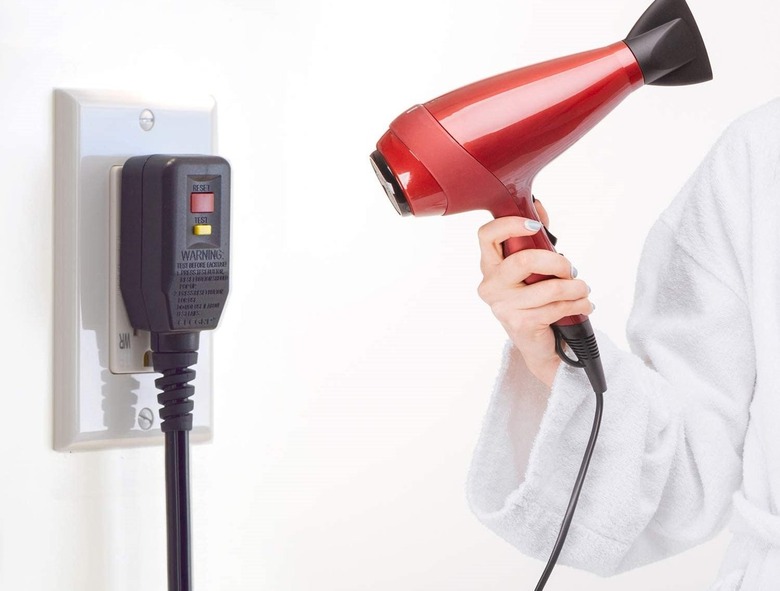What Are ALCI Safety Plugs?
We may receive a commission on purchases made from links.
Appliance leakage current interrupter (ALCI) safety plugs are basically circuit breakers for appliances commonly used around water sources, like hair dryers and electric shavers. In general, ALCI plugs have a "reset" and "test" button much like the ground-fault circuit-interrupter (GFCI) outlets found in bathrooms and kitchens. If the ALCI plug detects a change or imbalance in the electrical current, it will interrupt the power to prevent electrocution.
Tip
ALCI safety plugs are found on the cords of portable appliances, like hair dryers. An ALCI cuts the power to an appliance to prevent an electrical shock.
About ALCI Safety Plugs
About ALCI Safety Plugs
ALCI safety plugs detect changes in the electrical current that powers hair dryers and other appliances. An electrical shock and potentially fatal electrocution occur when the "hot" part of the electrical current comes in contact with water and your hands or body. When there is a ground-fault current of 6mA (milliamperes) or more, the ALCI in the plug trips and cuts the power. However, if you drop your hair dryer in the sink, don't rely on the ALCI plug for full protection; unplug the appliance before removing it from the water.
After you unplug and remove the hair dryer or other appliance from the water, turn it off and allow it to completely dry before resetting the ALCI safety plug. Once dry, press the "reset" button and plug it back into the outlet. If it turns off again, let it dry for a few more days. If the ALCI plug continues to turn off the power, don't cut it off and replace the plug with a standard two- or three-prong plug; it's not safe. Instead, replace the entire appliance.
Test the ALCI safety plug by plugging in the hair dryer or appliance, turning it on and pressing the "test" button. The unit should stop working. To turn it back on, unplug the item, press the "reset" button, plug it in and turn it on. When not in use, unplug all appliances and put them away. Keep them out of the reach of children.
About GFCI Outlets
About GFCI Outlets
An additional layer of protection against electrical shocks and electrocution are the GFCI outlets in your bathroom and kitchen. GFCI outlets also break the circuit when changes in the electrical current are detected. In addition to wall outlets, GFCI breakers can be installed at the main electrical panel to protect all the outlets on that circuit. When working outside or camping, you can also use a portable or inline GFCI outlet between an outlet and a power cord.
Test GFCI outlets monthly by plugging in a night light and then pressing the "test" button. Turn the outlet back on by pressing the "reset" button. If the night light doesn't light or shuts off immediately, call an electrician to check the outlet and circuit.
GFCI outlets in wet areas are now required by the National Electrical Code, though homes built before 1971 may not be up to code. Consider replacing bathroom and kitchen outlets with GFCI outlets to ensure your safety.
Electricity and Home Safety
Electricity and Home Safety
Many home incidents involving electricity and fires are preventable. While ALCI safety plugs and GFCI outlets provide protection in wet areas, take time to ensure electric and fire safety in your home. Inspect power cords regularly and avoid the overuse of extension cords in place of installing new electrical outlets. Worn, damaged, and overloaded extension and power cords are a serious fire hazard.
Use all appliances according to the manufacturer directions to avoid electrical shocks and fire hazards. Clean exhaust fans, dryer vents, and other dust- and debris-catching devices regularly. Clogged fan motors may overheat and start a fire. Add smoke detectors and change the batteries twice a year when the time changes in spring and fall.
